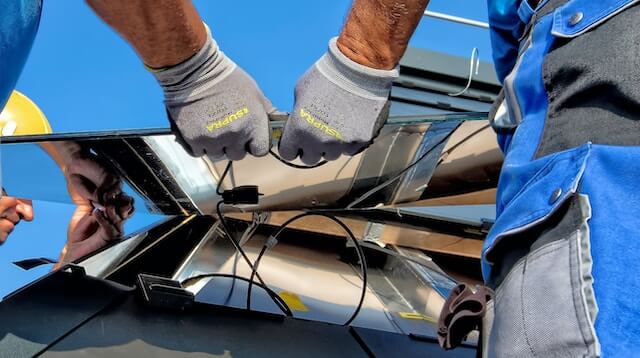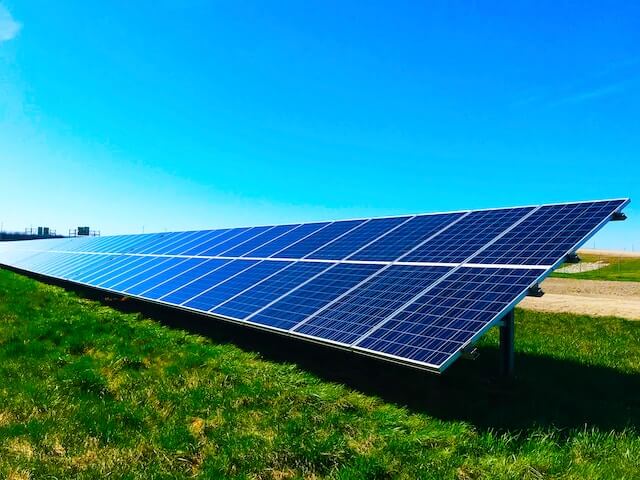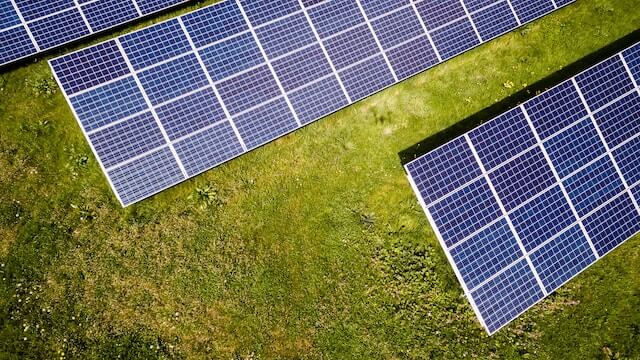Last Updated on 14 February 2025 by Mubashir Rafique
Many individuals are turning to alternate energy sources because of rising power bills. Particularly, solar energy is becoming more and more well-liked as it’s a reasonably priced method of using solar energy as electricity.
We’ll walk you through the correct installation of solar panels in this comprehensive guide.
1. Solar Panel Components

The first and most important consideration in a solar panel installation is the selection of correctly sized solar panels. Solar panels are made up of many components that work together to generate clean energy.
Photovoltaic cells are used to make these solar panels. When sunlight strikes these cells, electrons become energized and leave their atoms. These electrons are then gathered to produce current. This energy is then stored in a solar battery package.
The inverter is the engine that turns this direct current provided by the panels into alternating current to power appliances. For most energy production, use a high-capacity inverter.
Solar panels and other structures are held together by mounting frames. The robust frames help to secure all components and shield from other external damage.
Since these panels are fixed to mounting frames, the Racking and Tracking system allows the panels to change their alignment to maximize sun’s exposure.
2. Site Assessment and Planning

Subsequently, a specialized consultant will conduct extensive investigations into the proposed installation area. The details from this site research will be significant in order to support your installations.
Experts may advise you on a range of concerns, including sun exposure, shade, wind velocity, and the strength of the base where the installation will take place.
It is critical to investigate the base’s sturdiness since some soils are not suited for solar plant installation. Excess moisture in the soil makes it unsuitable for construction.
After inspecting the place, you should determine the orientation of the panels.
The last step of the site assessment is to internet search plan your energy consumption and accordingly select the appropriate number of panels required.
3. Permits

Ensure you have been issued with a permit before attempting to install so as not to face lawsuits at any time.
Besides, you must comply with city and state statutory laws like construction code and so on prior to solar installation.
Different countries have different laws for using solar panels, especially in commercial and domestic settings. In order to remain compliant, you must obtain municipal authorization and all licenses.
The relevant civic compliance should seek written authority for its solar panel to be connected to the power grid from a concerned power service provider. Remember that the final hurdle will be your service provider, hence ensure that your project is safe enough for the grid.
4. Installation
Always prioritize safety during installations. Ensure that you are properly dressed with relevant safety equipment when installing the solar panels either on the roof, on the ground or even in the tracking system.
Double check and inspect all the wiring connections as well as grounds before installing the solar panels to the inverter. Ensure that you tighten all of the connection points in the solar panel system to avoid any chances of failures.
Furthermore, ensure there is an adequate airflow before putting up the inverter, and confirm that the right wires connect the MAIN power panel and the AC unit.
5. Testing
Your solar panels might not generate enough energy after installation. Always make sure that there is no factor preventing energy production. Replace broken equipment as quickly as possible.
After the complete installation, perform a preliminary test to ensure the efficient function of the solar panels.
6. Maintenance and Care
Sometimes your solar panel can be inefficient. This inefficiency could be caused by dust accumulation on the surfaces of the panels. It is avoidable by keeping the panels free from dirt which helps in maximum power production.
Furthermore, to ensure and avoid any inefficiencies continuously monitor for lowering of energy production. This enables prompt identification and resolution of faults in solar panels .
In some cases, these fixes might not work, and your solar panel may require professional expertise. You should always contact experts for periodic Solar panel maintenance or in case of external damage to the panels. While contacting experts, do check for the warranty of your system, too.
7. Maximize Savings
Net metering is an additional way to increase your savings. This system allows you to feed excess energy back into the grid, thus reducing your energy bills.
Net metering also benefits local utilities to better manage peak production loads. You should also learn more about government issued subsidies and incentives to avail more cost-reduction.
Conclusion
Solar panels are a great alternative to traditional energy methods that provides you freedom from the reliance on energy grid and also help you to maximize your savings.
So, consider these tips when making a transition to sustainable energy.
